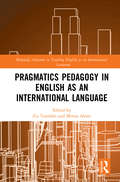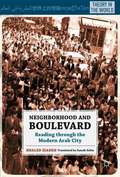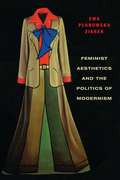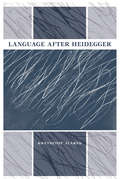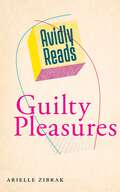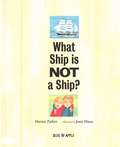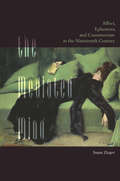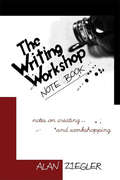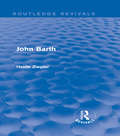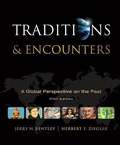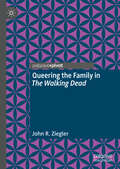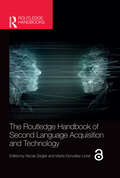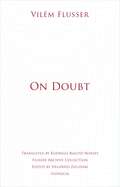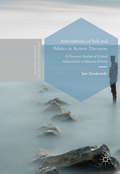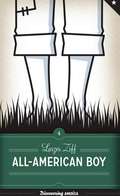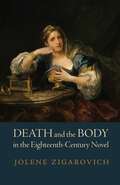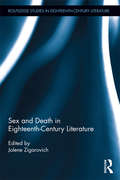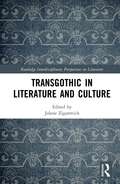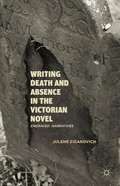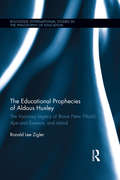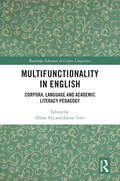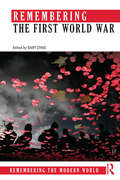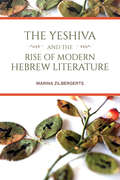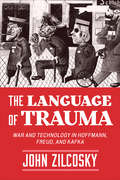- Table View
- List View
Pragmatics Pedagogy in English as an International Language (Routledge Advances in Teaching English as an International Language Series)
by Zia Tajeddin and Minoo AlemiPragmatics Pedagogy in English as an International Language aims to bring to light L2 pragmatics instruction and assessment in relation to English as an International Language (EIL). The chapters in this book deal with a range of pedagogically related topics, including the historical interface between L2 pragmatics and EIL, reconceptualization of pragmatic competence in EIL, intercultural dimension of pragmatics pedagogy in EIL, teacher pragmatic awareness of instruction in the context of EIL, pragmatics of politeness in EIL, pragmatic teaching materials for EIL pedagogy, teachers’ and scholars’ perceptions of pragmatics pedagogy in EIL, assessment and assessment criteria in EIL-aware pragmatics, and methods for research into pragmatics in EIL. This book is different from other books about both EIL pedagogy and pragmatics pedagogy. Exploring the interface between different dimensions of pragmatics pedagogy and EIL, it suggests instructional and assessment tasks for EIL-aware pedagogy and directions for research on EIL-based pragmatics pedagogy. Pragmatics Pedagogy in English as an International Language will be useful for a range of readers who have an interest in the pragmatics instruction and assessment of EIL as well as those whose main area of specialization is EIL but would like to know how EIL, with its rich conceptual and empirical background, can go beyond linguistic instruction to embrace the instruction of pragmatic competence.
Neighborhood and Boulevard
by Khaled ZiadehCombines the styles of memoir, history, anthropology, and theory to develop an innovative reflection on the materiality of culture. Through its style and content, the text challenges the Orientalist bifurcation between tradition and modernity in the Arab world, revealing instead tradition's own dynamism and its coexistence alongside modernity.
Feminist Aesthetics and the Politics of Modernism (Columbia Themes in Philosophy, Social Criticism, and the Arts)
by Ewa Płonowska ZiarekEwa Ziarek fully articulates a feminist aesthetics, focusing on the struggle for freedom in women's literary and political modernism and the devastating impact of racist violence and sexism. She examines the contradiction between women's transformative literary and political practices and the oppressive realities of racist violence and sexism, and she situates these tensions within the entrenched opposition between revolt and melancholia in studies of modernity and within the friction between material injuries and experimental aesthetic forms. Ziarek's political and aesthetic investigations concern the exclusion and destruction of women in politics and literary production and the transformation of this oppression into the inaugural possibilities of writing and action. Her study is one of the first to combine an in-depth engagement with philosophical aesthetics, especially the work of Theodor W. Adorno, with women's literary modernism, particularly the writing of Virginia Woolf and Nella Larsen, along with feminist theories on the politics of race and gender. By bringing seemingly apolitical, gender-neutral debates about modernism's experimental forms together with an analysis of violence and destroyed materialities, Ziarek challenges both the anti-aesthetic subordination of modern literature to its political uses and the appreciation of art's emancipatory potential at the expense of feminist and anti-racist political struggles.
Language after Heidegger
by Krzysztof Ziarek John SallisWorking from newly available texts in Heidegger's Complete Works, Krzysztof Ziarek presents Heidegger at his most radical and demonstrates how the thinker's daring use of language is an integral part of his philosophical expression. Ziarek emphasizes the liberating potential of language as an event that discloses being and amplifies Heidegger's call for a transformative approach to poetry, power, and ultimately, philosophy.
Avidly Reads Guilty Pleasures
by Arielle Zibrak"My guilty pleasure wasn’t just reading low-brow fiction or even female-authored fiction, it was being femme itself."What is it about ribald romance novels, luxurious interior design, and frothy wedding dresses that often make women feel their desires come with a shadow of shame? In Avidly Reads Guilty Pleasures, Arielle Zibrak considers the specifically pleasurable forms of feminine guilt and desire stimulated by supposedly “lowbrow” aesthetic tendencies. She takes up the overwhelming preoccupation with the experience of being humiliated, dominated, or even abused that has pervaded the stories that make up women’s culture—from eighteenth-century epistolary novels to popular twentieth-century teen magazine features to present-day romantic comedies.In three chapters—“Rough Sex,” “Expensive Sheets,” and “Saying Yes to the Dress”—that mirror the plot structures of feminine fictions themselves, this book tells the story of the desires that only the guiltiest of pleasures evoke. Zibrak reexamines documents of femme culture long dismissed as “trash” to reveal the surprisingly cathartic experiences produced by tales of domination, privilege, and the material trappings of the heteropatriarchy.Part of the Avidly Reads series, this slim book gives us a new way of looking at American culture. With the singular blend of personal reflection and cultural criticism featured in the series, Avidly Reads Guilty Pleasures reclaims women’s experiences for themselves.
What Ship Is Not a Ship
by Harriet ZiefertWhat language lesson doesn't seem like a lesson? The fun guessing game inside this book! Clever word groupings list three things that are alike and one that it is different. For example, there are living rooms, bedrooms, and bathrooms, but a mushroom is not a room! Picture clues will help kids figure out which thing is different and begin to grasp fine-tuned nuances of word parts, roots, and meanings. In addition, the text's guessing-game approach invites kids into a call-and-response dynamic. This title is a great companion to the well-received Do You Know Which Ones Will Grow? and What Is Part This, Part That?
The Mediated Mind: Affect, Ephemera, and Consumerism in the Nineteenth Century
by Susan ZiegerHow did we arrive at our contemporary consumer media economy? Why are we now fixated on screens, imbibing information that constantly expires, and longing for more direct or authentic kinds of experience? The Mediated Mind answers these questions by revisiting a previous media revolution, the nineteenth-century explosion of mass print. Like our own smartphone screens, printed paper and imprinted objects touched the most intimate regions of nineteenth-century life. The rise of this printed ephemera, and its new information economy, generated modern consumer experiences such as voracious collecting and curating, fantasies of disembodied mental travel, and information addiction. Susan Zieger demonstrates how the nineteenth century established affective, psychological, social, and cultural habits of media consumption that we still experience, even as pixels supersede paper. Revealing the history of our own moment, The Mediated Mind challenges the commonplace assumption that our own new media lack a past, or that our own experiences are unprecedented.
The Writing Workshop Note Book: Notes on Creating and Workshopping
by Alan ZieglerThe Writing Workshop Notebook is devoted to making, remaking, and remarking on writing. Ziegler's text is animated by a concern about how we relate to our own and others’ writing and by a desire to have a suitable effect on the reader’s experience with writing and critiquing. The book is supported by the author's experience from decades of leading writing workshops.
Facing Texts: Encounters Between Contemporary Writers and Critics
by Heide ZieglerThis selection of fiction by many of America's best writers, each coupled with a distinguished critic's response, is designed to defy the chronological secondariness of critical interpretation. During the creation of this book the majority of the contributions, chosen by the writers themselves, were as yet unpublished, providing an unmediated encounter between author and critic. Every reader extends what editors, authors, and critics have begun by adding to the imaginary space in which all texts may be woven together. This process serves as metaphor for the changing nature of any latter-day encounter with one's own literary tradition. The interfacing of texts not only illuminates the fiction, and the relationship of fiction to critics, but also informs our conceptions of text, criticism, and fiction itself.
John Barth (Routledge Revivals)
by Heide ZieglerJohn Barth represents most completely what has been termed postmodernism, not because his work comprises more postmodernist features than other contemporary writers but because, for Barth, "life" and "art" are two sides of the same coin. In this brief study, first published in 1987, Heide Ziegler examines all Barth’s novels. She argues that each pair of novels first "exhausts" and then "replenishes" those literary genres that hinge on a particular world view: the existentialist novel, the Bildungsroman, the Kunstlerroman, or the realistic novel. Through the division of labour between character and author Barth manages to develop a new mode of literary parody which projects itself beyond the mocked literary model and even self-parody into the realm of future fiction. This book is ideal for students of literature and postmodern studies.
Traditions and Encounters: A Global Perspective on the Past (5th Edition)
by Herbert F. Ziegler Jerry H. BentleyConnect students to the stories of history. Connect students to the experience of history. Connect students to success in history. At McGraw-Hill, we have dedicated the past few years to deepening our understanding of student and instructor experience. Employing a wide array of research tools including surveys, focus groups, and ethnographic studies, we've identified areas in need of improvement to provide an opportunity for greater learning and teaching experiences. The fifth edition of Traditions & Encounters is a result of this. Traditions & Encounters also has a rich history of firsts: the first world history text to take a truly global perspective on the past; the first to emphasize connections among cultures; the first to combine twin themes with a seven-part framework, making the huge story of world history more manageable to both teach and learn. Now Traditions & Encounters becomes the first truly interactive world history program: one that marries groundbreaking adaptive diagnostics and interactivities with a captivating narrative and engaging visuals, creating a unique learning environment that propels greater student success and better course results. Instructors gain insight into students' engagement and understanding as students develop a base of knowledge and construct critical thinking skills. Chapter-opening vignettes and a lively narrative keep students turning the page while the adaptive questioning for each chapter and the personalized study plan for each individual student help students prepare for class discussions and course work. With its hallmark of twin themes, Traditions & Encounters continues to tell the story of the cultures and interactions that have shaped world history, while adding redesigned maps, new primary sources, and new chapter- and part-level features that strengthen connections and prompt students to analyze the events and themes in order to build a greater understanding of the past and an appreciation of history's influence on the present. Students are no longer simply reading; they are reading, interacting, and engaging in a visual, auditory, and hands-on learning experience. Give students an experience. Improve course participation and performance. Experience Traditions & Encounters, and experience success.
Queering the Family in The Walking Dead
by John R. ZieglerThis book traces how The Walking Dead franchise narratively, visually, and rhetorically represents transgressions against heteronormativity and the nuclear family. The introduction argues that The Walking Dead reflects cultural anxiety over threats to the family. Chapter 1 examines the destructive competition created by heteronormativity, such as the conflict between Rick and Shane. Chapter 2 focuses on the actual or attempted participation of characters such as Carol and Negan in queer relationships. Chapter 3 interprets zombies as queer antagonists to heteronormativity, while Chapter 4 explores the incorporation of zombies into the lives of characters such as the Governor and the Whisperers. The conclusion asserts that The Walking Dead presents both queer alternatives to and damaging contradictions within the traditional heterosexual family model, helping to question this model and to consider the struggle of queer American families. Overall, this study holds special interest for students and scholars of queerness, zombies, and the family.
The Routledge Handbook of Second Language Acquisition and Technology (The Routledge Handbooks in Second Language Acquisition)
by Nicole ZieglerTechnology- mediated language learning has matured over the past few decades, with various tools and contexts now widely used in language education for all ages and levels. Many of today’s language learners have experienced technology as an ever- present feature both within and beyond the classroom, highlighting how the role of technology has expanded into many daily activities, and underscoring how research in Second Language Acquisition (SLA) can inform and support the use of established and emerging technologies. The role of technology in language learning has continued to grow, with the recent COVID- 19 global pandemic further demonstrating the potential contributions of technology for supporting and facilitating second language development. Answering this increasing interest, this Handbook provides students, teachers, and scholars with a comprehensive collection of chapters on foundational topics and key issues related to technology, SLA, and where relevant, pedagogical applications.
On Doubt
by Siegfried Zielinski Vilém Flusser Rodrigo Maltez NovaesIn On Doubt, Vilém Flusser refines Martin Heidegger's famous declaration that "language is the dwelling of Being." For Flusser, "the word is the dwelling of being," because in fact, in the beginning, there was the word. On Doubt is a treatise on the human intellect, its relation to language, and the reality-forming discourses that subsequently emerge. For Flusser, the faith that the modern age places in Cartesian doubt plays a role similar to the one that faith in God played in previous eras--a faith that needs to be challenged. Descartes doubts the world through his proposition cogito ergo sum, but leaves doubt itself untouched as indubitable and imperious. His cogito ergo sum may have proved to the Western intellect that thoughts exist, but it did not prove the existence of that which thinks: one can eliminate thinking and yet continue being.Therefore, should we not doubt doubt itself? Should we not try to go beyond this last step of Cartesian doubt and look for a new faith? The twentieth century has seen many attempts to defeat Cartesian doubt, however, this doubt of doubt has instead generated a complete loss of faith, which the West experiences as existential nihilism. Hence, the emergent emptying of values that results from such extreme doubt. Everything loses its meaning. Can this climate be overcome? Will the West survive the modern age?
Articulations of Self and Politics in Activist Discourse: A Discourse Analysis of Critical Subjectivities in Minority Debates (Postdisciplinary Studies in Discourse)
by Jan ZienkowskiThis book focuses on the discursive processes that allow activists to make sense of themselves and of the modes of politics they engage in. It shows how political and metadiscursive awareness develop in tandem with a reconfiguration of one's sense of self. The author offers an integrated pragmatic and poststructuralist perspective on self and subjectivity. He draws on Essex style discourse theory, early pragmatist philosophy, and linguistic pragmatics, arguing for a notion of discourse as a multi-dimensional practice of articulation. Demonstrating the analytical power of this perspective, he puts his approach to work in an analysis of activist discourse on integration and minority issues in Flanders, Belgium. Subjects articulate a whole range of norms, values, identities and narratives to each other when they engage in political discourse. This book offers a way to analyse the logics that structure political awareness and the associated boundaries for discursive self-interpretation.
All-American Boy
by Larzer ZiffFrom his celebrated appearance, hatchet in hand, in Parson Mason Locke Weems's Life of Washington to Booth Tarkington's Penrod, the all-American boy was an iconic figure in American literature for well over a century. Sometimes he was a "good boy," whose dutiful behavior was intended as a model for real boys to emulate. Other times, he was a "bad boy," whose mischievous escapades could be excused either as youthful exuberance that foreshadowed adult industriousness or as deserved attacks on undemocratic pomp and pretension. But whether good or bad, the all-American boy was a product of the historical moment in which he made his appearance in print, and to trace his evolution over time is to take a fresh view of America's cultural history, which is precisely what Larzer Ziff accomplishes in All-American Boy. Ziff looks at eight classic examples of the all-American boy-young Washington, Rollo, Tom Bailey, Tom Sawyer, Ragged Dick, Peck's "bad boy," Little Lord Fauntleroy, and Penrod-as well as two notable antitheses-Huckleberry Finn and Holden Caulfield. Setting each boy in a rich cultural context, Ziff reveals how the all-American boy represented a response to his times, ranging from the newly independent nation's need for models of democratic citizenship, to the tales of rags-to-riches beloved during a century of accelerating economic competition, to the recognition of adolescence as a distinct phase of life, which created a stage on which the white, middle class "solid citizen" boy and the alienated youth both played their parts.
Death and the Body in the Eighteenth-Century Novel
by Jolene ZigarovichDeath and the Body in the Eighteenth-Century Novel demonstrates that archives continually speak to the period’s rising funeral and mourning culture, as well as the increasing commodification of death and mourning typically associated with nineteenth-century practices. Drawing on a variety of historical discourses—such as wills, undertaking histories, medical treatises and textbooks, anatomical studies, philosophical treatises, and religious tracts and sermons—the book contributes to a fuller understanding of the history of death in the Enlightenment and its narrative transformation.Death and the Body in the Eighteenth-Century Novel not only offers new insights about the effect of a growing secularization and commodification of death on the culture and its productions, but also fills critical gaps in the history of death, using narrative as a distinct literary marker. As anatomists dissected, undertakers preserved, jewelers encased, and artists figured the corpse, so too the novelist portrayed bodily artifacts. Why are these morbid forms of materiality entombed in the novel? Jolene Zigarovich addresses this complex question by claiming that the body itself—its parts, or its preserved representation—functioned as secular memento, suggesting that preserved remains became symbols of individuality and subjectivity. To support the conception that in this period notions of self and knowing center upon theories of the tactile and material, the chapters are organized around sensory conceptions and bodily materials such as touch, preserved flesh, bowel, heart, wax, hair, and bone. Including numerous visual examples, the book also argues that the relic represents the slippage between corpse and treasure, sentimentality and materialism, and corporeal fetish and aesthetic accessory.Zigarovich’s analysis compels us to reassess the eighteenth-century response to and representation of the dead and dead-like body, and its material purpose and use in fiction. In a broader framework, Death and the Body in the Eighteenth-Century Novel also narrates a history of the novel that speaks to the cultural formation of modern individualism.
Sex and Death in Eighteenth-Century Literature (Routledge Studies in Eighteenth-Century Literature #10)
by Jolene ZigarovichThis book discusses sex and death in the eighteenth-century, an era that among other forms produced the Gothic novel, commencing the prolific examination of the century’s shifting attitudes toward death and uncovering literary moments in which sexuality and death often conjoined. By bringing together various viewpoints and historical relations, the volume contributes to an emerging field of study and provides new perspectives on the ways in which the century approached an increasingly modern sense of sexuality and mortality. It not only provides part of the needed discussion of the relationship between sex, death, history, and eighteenth-century culture, but is a forum in which the ideas of several well-respected critics converge, producing a breadth of knowledge and a diversity of perspectives and methodologies previously unseen. As the contributors demonstrate, eighteenth-century anxieties over mortality, the body, the soul, and the corpse inspired many writers of the time to both implicitly and explicitly embed mortality and sexuality within their works. By depicting the necrophilic tendencies of libertines and rapacious villains, the fetishizing of death and mourning by virtuous heroines, or the fantasy of preserving the body, these authors demonstrate not only the tragic results of sexual play, but the persistent fantasy of necro-erotica. This book shows that within the eighteenth-century culture of profound modern change, underworkings of death and mourning are often eroticized; that sex is often equated with death (as punishment, or loss of the self); and that the sex-death dialectic lies at the discursive center of normative conceptions of gender, desire, and social power.
TransGothic in Literature and Culture (Routledge Interdisciplinary Perspectives on Literature)
by Jolene ZigarovichThis book contributes to an emerging field of study and provides new perspectives on the ways in which Gothic literature, visual media, and other cultural forms explicitly engage gender, sexuality, form, and genre. The collection is a forum in which the ideas of several well-respected critics converge, producing a breadth of knowledge and a diversity of subject areas and methodologies. It is concerned with several questions, including: How can we discuss Gothic as a genre that crosses over boundaries constructed by a culture to define and contain gender and sexuality? How do transgender bodies specifically mark or disrupt this boundary crossing? In what ways does the Gothic open up a plural narrative space for transgenre explorations, encounters, and experimentation? With this, the volume’s chapters explore expected categories such as transgenders, transbodies, and transembodiments, but also broader concepts that move through and beyond the limits of gender identity and sexuality, such as transhistories, transpolitics, transmodalities, and transgenres. Illuminating such areas as the appropriation of the trans body in Gothic literature and film, the function of trans rhetorics in memoir, textual markers of transgenderism, and the Gothic’s transgeneric qualities, the chapters offer innovative, but not limited, ways to interpret the Gothic. In addition, the book intersects with but also troubles non-trans feminist and queer readings of the Gothic. Together, these diverse approaches engage the Gothic as a definitively trans subject, and offer new and exciting connections and insights into Gothic, Media, Film, Narrative, and Gender and Sexuality Studies.
Writing Death and Absence in the Victorian Novel
by Jolene ZigarovichThis book asks why Bront#65533;, Dickens, and Collins saw the narrative act as a series of textual murders and resurrections? Drawing on theorists such as Derrida, Blanchot, and de Man, Zigarovich maintains that narrating death was important to the understanding of absence, separation, and displacement in an industrial and destabilized culture.
The Educational Prophecies of Aldous Huxley: The Visionary Legacy of Brave New World, Ape and Essence and Island (Routledge International Studies in the Philosophy of Education)
by Ronald ZiglerThe visionary legacy of Aldous Huxley is as relevant today as ever. Huxley possessed a sober understanding of the human condition as well as an inspired vision of the human potential. This volume presents an interdisciplinary examination and appreciation of Aldous Huxley’s three visionary novels – Brave New World (1932), Ape and Essence (1948), and Island (1962) – to reveal the extent to which Huxley’s prognoses into our possible futures was prophetic. The author assesses each novel to reveal the foresights that define our current educational, social, religious, political, and economic institutions, while also exposing our conflicts within those institutions. This volume examines the educational, cultural and technological changes that have shaped our society since Huxley’s work, with special reference to the enduring legacy of educational philosopher John Dewey. It offers profound insights into the educational forces and moral foundations of our society that shape us, both inside and outside of our schools. It is the first of its kind to focus exclusively on all three of Huxley’s visionary novels and detail their relevance to our world today.
Multifunctionality in English: Corpora, Language and Academic Literacy Pedagogy (Routledge Advances in Corpus Linguistics)
by Zihan Yin and Elaine VineThis edited volume provides detailed analyses of multifunctional forms in English and offers hands-on approaches exemplifying relevant implications and useful applications to language and literacy educators in TESOL, ESL/EFL/EAL and research students in applied linguistics and education. The chapters cover: the multifunctionality of utterances in spoken and multimodal corpora, the multifunctionality of linguistic creativity in different genres, multifunctional pronouns in hard and soft sciences, and professional discourse in the university and secondary school contexts. The volume also offers a comparison of the multifunctionality of verbs between ESL textbooks, native written and spoken English corpora, and between ESL and L1 university students in writing a particular genre; comparisons of the multifunctionality of discourse markers between different registers and between L1 and L2 English speakers, as well as multifunctional metadiscourse markers in different disciplines and paradigms. With detailed analysis of authentic corpus data representing different varieties of English, specialised use in different contexts and disciplines and practical teaching and learning applications, the volume bridges theory and practice, providing a creatively designed resource for students, educators and researchers looking to understand multifunctional forms in English.
Remembering the First World War (Remembering the Modern World)
by Bart ZiinoRemembering the First World War brings together a group of international scholars to understand how and why the past quarter of a century has witnessed such an extraordinary increase in global popular and academic interest in the First World War, both as an event and in the ways it is remembered. The book discusses this phenomenon across three key areas. The first section looks at family history, genealogy and the First World War, seeking to understand the power of family history in shaping and reshaping remembrance of the War at the smallest levels, as well as popular media and the continuing role of the state and its agencies. The second part discusses practices of remembering and the more public forms of representation and negotiation through film, literature, museums, monuments and heritage sites, focusing on agency in representing and remembering war. The third section covers the return of the War and the increasing determination among individuals to acknowledge and participate in public rituals of remembrance with their own contemporary politics. What, for instance, does it mean to wear a poppy on armistice/remembrance day? How do symbols like this operate today? These chapters will investigate these aspects through a series of case studies. Placing remembrance of the First World War in its longer historical and broader transnational context and including illustrations and an afterword by Professor David Reynolds, this is the ideal book for all those interested in the history of the Great War and its aftermath.
The Yeshiva and the Rise of Modern Hebrew Literature (Jews in Eastern Europe)
by Marina ZilbergertsThe Yeshiva and the Rise of Modern Hebrew Literature argues that the institution of the yeshiva and its ideals of Jewish textual study played a seminal role in the resurgence of Hebrew literature in modern times. Departing from the conventional interpretation of the origins of Hebrew literature in secular culture, Marina Zilbergerts points to the practices and metaphysics of Talmud study as its essential animating forces. Focusing on the early works and personal histories of founding figures of Hebrew literature, from Moshe Leib Lilienblum to Chaim Nachman Bialik, The Yeshiva and the Rise of Modern Hebrew Literature reveals the lasting engagement of modern Jewish letters with the hallowed tradition of rabbinic learning.
The Language of Trauma: War and Technology in Hoffmann, Freud, and Kafka
by John ZilcoskyFrom the Napoleonic Wars to the invention of the railway to the shell shock of World War I, writers tried to give voice to the suffering that war and industrial technology had wrought all around them. Yet they, like the doctors who treated these victims, repeatedly ran up against the incapacity of language to describe such anguish; those who suffered trauma, those who tried to heal it, and those who represented it were all unable to find the appropriate words. In The Language of Trauma, John Zilcosky uncovers the reactions of three major central European writers – E.T.A. Hoffmann, Sigmund Freud, and Franz Kafka – to the birth of modern trauma in the nineteenth and early twentieth centuries. Zilcosky makes the case that Hoffmann, Freud, and Kafka managed to find the language of trauma precisely by not attempting to name the trauma conclusively and instead allowing their writing to mimic the experience itself. Just as the victims’ symptoms seemed not to correspond to a physical cause, the writers’ words did not connect directly to the objects of the world. While doctors attempted to overcome this indeterminacy, these writers embraced and investigated it; they sought a language that described language’s tragic limits and that, in so doing, exemplified the wider literary and philosophical crisis of their time. Zilcosky boldly argues that this linguistic scepticism emerged together with the medical inability to name the experience of trauma. He thereby places trauma where it belongs: at the heart of both medicine’s diagnostic predicament and modern literature’s most daring experiments.
